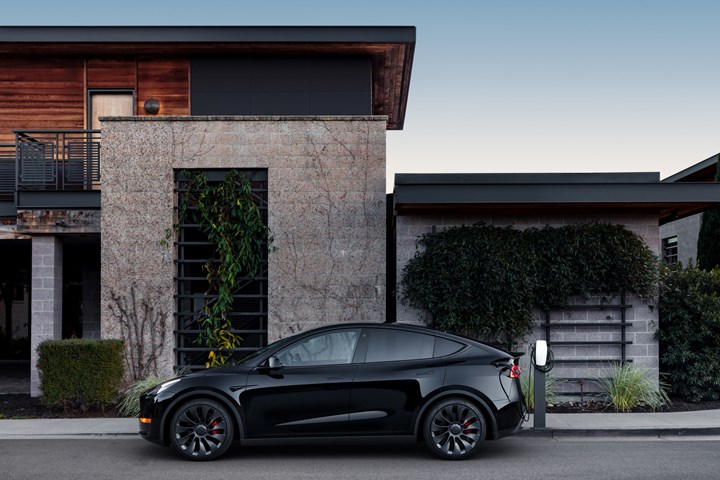A Sea Change for Automotive?
Investments in new energy vehicles by major automotive OEMs have been signaling a larger share of the market for electrified vehicles in the not so distant future — but when should finishers invest in new capabilities?

I first began reporting on automotive manufacturing during my time editing for Products Finishing’s sister publication CompositesWorld. I remember asking people questions about how lightweighting of materials might change industries like automotive. At the time, any conversation of electric vehicles (EVs) was quickly met with skepticism. It seemed like there were two camps that people had a firm foothold in — those who worked in R&D and believed that EVs were the future and those who worked on shop floors that thought that it was a pipe dream. There didn’t seem to be much of a middle ground.
In the past few years, things seem to have changed. I don’t mean that in an overly optimistic way. I don’t believe that next year or two we’ll suddenly all be driving EVs. But, I do think that the once pervasive notion that widespread adoption of EVs could never happen has started to soften. The investments that automotive OEMs are making in EVs are a big part of that. Another driver is increasing awareness of the problems that we need to solve in this world from climate change to reliance on fossil fuels to traffic congestion.
The COVID pandemic and related supply chain woes and recession have brought to light a need to find new ways of doing things. It’s not easy and isn’t going to be. People tend to see these issues in black and white,\ and have strong opinions that are influenced by our politics or our own lifestyles, which we are reluctant to change. As with most things, I tend to believe that the true path lies in the middle of such beliefs. Do we need to stop using so much oil? Yes, for many reasons. Are electric vehicles going to suddenly transform the way we travel and the energy we use? No. There are so many factors to consider from the environmental implications of manufacturing and charging batteries to the severely lacking infrastructure in place to support EV travel. Yet, the introduction of EVs and hybrid vehicles into the right areas of the automotive markets such as fleet vehicles and urban mobility will have an increasingly positive impact.
We all want overnight fixes to our problems, but that’s just not how it works. Almost any solution faces its share of pros and cons. The true path forward means considering all points of view and finding the right solution. With automotive, there seems to be a bit of a sea change brewing. The near future seems to have an increasingly larger spot for electrified automobiles, whether they are hybrids or true EVs.
The questions on the minds of so many involved in manufacturing today aren’t so much about whether or not EVs will occupy an increasingly larger share of the automotive market, but instead whether or not the tipping point for more widespread adoption has fully arrived. When should investments be made in expanding capabilities to meet a growing need?
In this issue of Products Finishing, we explore some of the realities, but also the possibilities and opportunities facing finishers who are working with the automotive industry. You’ll find a trend-focused interview with transportation editor Gary Vasilash, who has reported on the automotive industry for more than 30 years (page 8). Mark Shario of finishing chemical supplier Columbia Chemical shares ideas about what finishers can expect in terms of changes and demands when it comes to the finishes they provide to the automotive sector (page 34). Contributing writer Peggy Malnati offers a look at new smart solutions for automotive finishing (page 22). You’ll also read about ways chemical cleaning and passivation help improve battery cooling in new energy vehicles (page 32) and glean supply chain insights from Japan’s successful automotive industry (page 28).
As always, the manufacturing landscape will continue to shift and evolve — and almost nowhere is that more apparent than in the automotive sector. If you have ideas you’d like to contribute to the conversation or have a story you’d like to share, please reach out. We love hearing from our readers and our friends in the finishing community.
Related Content
Masking Solutions for Medical Applications
According to Custom Fabricating and Supplies, a cleanroom is ideal for converting, die cutting, laminating, slitting, packaging and assembly of medical-grade products.
Read MoreAOTCO Acquires Modern Metal Finishing
AOTCO has expanded its portfolio with the anodizing services of Modern Metal Finishing through an acquisition.
Read MoreHenry Ford Is Still Right When It Comes to Color
Who would have imagined that more than 100 years after his famous statement about any color as long as it’s black would still have relevance of a sort?
Read MoreRonatec Continues to Expand
Ronatec announces acquisition of ICF, growing its portfolio of offerings for the metal finishing market.
Read MoreRead Next
Episode 45: An Interview with Chandler Mancuso, MacDermid Envio Solutions
Chandler Mancuso, technical director with MacDermid Envio discusses updating your wastewater treatment system and implementing materials recycling solutions to increase efficiencies, control costs and reduce environmental impact.
Read MoreEducation Bringing Cleaning to Machining
Debuting new speakers and cleaning technology content during this half-day workshop co-located with IMTS 2024.
Read MoreDelivering Increased Benefits to Greenhouse Films
Baystar's Borstar technology is helping customers deliver better, more reliable production methods to greenhouse agriculture.
Read More














.jpg;maxWidth=300;quality=90)







